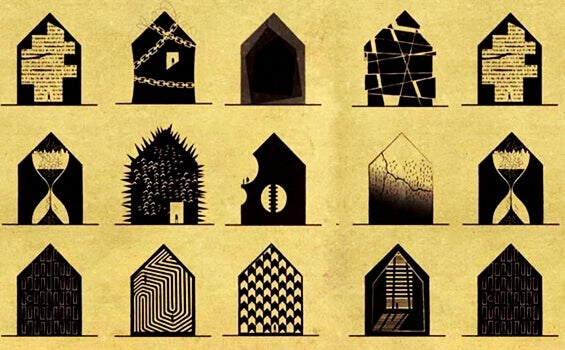Mental disorders are like diseases of the mind. This can be quite difficult to understand from abstract explanations, but we can try to explain mental disorders by comparing them to constructions: if mental disorders were spotlights, depression would be the most solitary, anxiety would be like a suffocating prison. Insomnia would be a place inhabited by watches without needles, because time does not pass, that is what Federico Babina, an architect who wanted to show us what the realities of our mind would be when it became our biggest problem.
Anyone who has experienced or suffers from some form of mental disorder will surely identify with this curious and impactful work of art, but you don’t need to feel these problems in your own skin to understand them, because many of us have experienced them. direct contact with people who have had or have a mental disorder: a person with Alzheimer’s disease, a family member with schizophrenia, an autism spectrum disorder, some kind of phobia, or even chronic insomnia.
- The characteristics of these conditions of the human spirit describe places where we can get trapped.
- Isolated or even lost.
- Obviously it seems.
- There are people who still don’t understand the possibility of getting sick from the mind.
- Or even who believe mental disorders.
- Whether we like it or not.
- Remain a stigma in our society.
Every person, however, is a world. And each spirit is trapped in very thick walls that separate it from reality. This is how Federico Babina feels. The Italian architect wanted to give visibility to his field of work the hardness of these mental illnesses and disorders. This project was called “Archiatric”, in a play of words between the words architecture and psychiatry in English, and deserves to be known.
Depression is one of the most common types of mental disorders. The World Health Organization (WHO) even considers it an epidemic. Far from having quick or obvious cures, the problem could become one of the leading causes of disability among diseases in the coming years.
On the other hand, what we often forget and that medical institutions try to point out is that depression increases the risk of developing other problems, heart disease, diabetes or even substance abuse have an increased risk of depressants, this is a very serious reality. a disease that destroys our quality of life. The condition consumes our entire house: not only is the floor lost, but you can also lose the ceiling, the walls.
Anxiety is, for Federico Babina, a house enclosed in bars, surrounded by barbed wire, thorns that make us prisoners of an increasingly small and suffocating scenario.
As we can see, this kind of disorder so common today is almost on the agenda by the rhythm of our life, it is represented by a place where there are no doors or windows, anxiety surrounds us and leaves us stagnant.
Schizophrenia is a serious brain disorder, the person is subjected to progressive psychological impairment that gradually undermines the ability to rationalize and process information, perception, will and emotions.
The mind is fragmented. There is a complete disorder and the pieces fall hopelessly and terribly, Federico Babina represents very well this situation with an image, you can see a person holding a small piece of the house that collapses with difficulty.
It should not be forgotten that schizophrenia is a type of early dementia, what many people do not know is that patients with this disease, who start early, usually die prematurely, lose a decade or two of life with the diagnosis.
Alzheimer’s disease is one of the saddest mental disorders, it is also the one that has the most impact at the family level, currently there is no possible treatment to reverse or stop this cognitive decline, if this disease were a house, would it be A decaying building A place that was once beautiful but now breaks, dissolves , is it gradually dismantled under the effect of time?
Autism spectrum disorder is a disorder of neurobiological development, as the terminology itself indicates, each person is at a specific point in that broad spectrum, so no two children are the same, no two adults with the same characteristics, each will have more or less repetitive behaviors, greater or lesser intellectual capacity and different openings for the use of language.
However, what generally characterizes the person with this disorder is usually their social isolation, their personal secrecy. So if this condition were a house, it would actually be a house in another house, in turn there would be another even smaller house in the last house, is it a psychological maze in which the person is trapped within the walls of her own? House? mind?
In conclusion, and as we can see in these examples prior to Federico Babina’s work, mental disorders can be represented in several ways, but they all have one thing in common: suffering and isolation. Patients, those with names and surnames who are trapped in their own walls, in the chaos of their own micro-universe, suffer without windows or doors and without anyone who can enter.
If any of our readers wanted to know more about this architect’s work and his “Archiátric” project, you can see more images in the following video:

